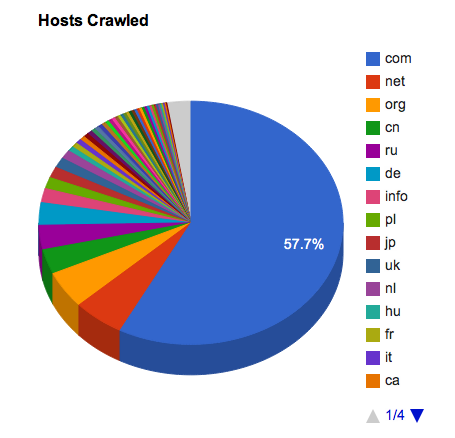Eonomic theories emanating from business schools do not usually draw 6,000-word takedowns in the popular press. But then, few ideas have permeated society as thoroughly as the notion of disruptive innovation. The theory describes the way a new product or service transforms an existing market — and eventually replaces and redefines the status quo — by bringing new simplicity, convenience and affordability. In a June 23 article in The New Yorker, Jill Lepore launched an attack on the soundness of the theory itself and the solidity of the scholarship behind it. She also decried the misappropriation of the concept across a variety of arenas beyond pure business.
“The 18th century embraced the idea of progress; the 19th century had evolution; the 20th century had growth and then innovation. Our era has disruption, which, despite its futurism, is atavistic,” wrote Lepore, a Harvard University professor of American history. “It’s a theory of history founded on a profound anxiety about financial collapse, an apocalyptic fear of global devastation and shaky evidence.”
The father of the theory of disruptive innovation, Harvard Business School professor Clayton M. Christensen, who coined the term in his 1997 book, The Innovator’s Dilemma, has offered an initial response to the criticisms in a Bloomberg Businessweek interview. In that piece, Christensen calls Lepore’s article a “criminal act of dishonesty.” He goes on to say that Lepore broke “all of the rules of scholarship that she accused me of breaking — in … truly egregious ways. In fact, every one — every one — of those points that she attempted to make [about The Innovator’s Dilemma] has been addressed in a subsequent book or article. Every one! And if she was truly a scholar as she pretends, she would have read [those].”Lepore’s polemic may or may not signal the beginning of the end for disruptive innovation as the knee-jerk answer to all institutional ills, but it has undoubtedly given great energy to the discussion of what was once a discrete and considerably more modest theory. “I do think this interaction is healthy in that we are all talking,” says Wharton management professor Rahul Kapoor. “It serves perhaps to discipline the use of the term and the application of the term … closer to what the research meant.” sloppy,” notes David Robertson, a Wharton practice professor of operations and information management. “That is a sign of the success of Christensen’s ideas and the widespread adoption. But it’s not fair to lay all the sloppiness at his feet. On the other hand, it is fair to talk about how sloppy the term ‘disruption’ has become, and how we have to worry about [disruptive] technology all over. Poking holes in that [sloppiness] is easy, and it’s a contribution that Lepore did that.” Plastic Bricks and Integrating Innovation
Christensen applauds Lepore for writing that disruptive innovation is a concept that has invaded all quarters of society, and that the term is now thrown around carelessly. The theory, as he defined it, saw disruptive innovation as the kind that comes from behind and develops a new market that eventually displaces the old one.
About Lepore’s piece, he told Businessweek: “In the first two or three pages, it seems that her motivation is to try to rein in this almost random use of the word ‘disruption.’ The word is used to justify whatever anybody — an entrepreneur or a college student — wants to do. And as I read that, I was delighted that somebody with her standing would join me in trying to bring discipline and understanding around a very useful theory. I’ve been trying to do it for 20 years.”
Many others agree. But beyond that, Robertson says he has differences with both Christensen and Lepore. “She says disruptive innovation has neither good evidence behind it nor predictive power, but then she doesn’t leave us with answers,” he notes. “If I am a CEO, and I see this disruptive technology entering my industry, what do I do?” At the same time, he adds, Lepore does not confront a false tenet of Christensen’s theory. “Christensen says we must respond to disruption by adopting the disruptive technology — or die. What Christensen has said is to disrupt yourself before somebody else does, and I don’t think that is always the answer.”
According to Robertson, there are lots of companies that have survived not by changing their fundamental business model, but by adapting new technologies to their strategy. Robertson, author of Brick by Brick: How LEGO Rewrote the Rules of Innovation and Conquered the Global Toy Industry, says that the Danish company was threatened by virtual play — including games like “Minecraft,” in which online players build and destroy in worlds inhabited by an online community. “It’s good, and cheaper than a LEGO plastic brick,” Robertson notes.
But LEGO innovated and integrated into its business a new venture that has only increased demand for the company’s core business: a feature-length film. The LEGO Movie has grossed more than $463 million worldwide, and for a while was the top-grossing film of 2014. “I think LEGO wants to reinvent the future of play,” says Robertson. “The core business is really spinning off tons of cash, and I know that some of that cash is going to labs in separate buildings that are looking at different ways kids can play. They have tried and failed several times to do something genuinely different, but they will continue trying until they get it right.”
Does disruption kill core business models? “Not necessarily,” Robertson says. “Does that mean you should anticipate how it is going to affect the core business? Of course you should. You should always be looking for that next big thing, as well. In the late 1990s, [LEGO] moved away from core business and stopped focusing on bricks. Everything was out-of-the-box innovation, and it almost put them out of business.”
Kapoor has looked at how these issues play out in the pharmaceutical industry, where investment in innovation happens, but “somehow it’s harder for these discoveries to be pushed toward development and pushed toward markets.” A research paper co-authored by Kapoor and Thomas Klueter, titled “Decoding the Adaptability-Rigidity Puzzle: Evidence from Pharmaceutical Incumbents’ Pursuit of Gene Therapy and Monoclonal Antibodies” and published in the Academy of Management Journal, argues that it is a misconception that incumbent firms do not invest in disruptive technology research are strongly influenced by the cognition and incentives of strategic decision makers and the resource allocation process within incumbent firms.
While these organizational characteristics facilitate firms’ development of sustaining technologies, they induce inertial pressures when the technological regime is disruptive and make it more difficult to garner resources and support for subsequent development.” Innovation supported through alliances and acquisitions, on the other hand, is shielded from those pressures.
Kapoor sees his paper as “helping the idea evolve in a more refined way.” The researchers note that “when we think about why it is difficult for firms to adapt to new innovations and new technology, it’s not that these firms get blinded — they don’t. But it is difficult within the context of inventive structures to give the same propriety to ideas that don’t fit with existing models. That is something not explicitly addressed in the research in the 1990s…. In [this] paper, we talk about the different ways established firms can overcome these inertial pressures. We think it provides a more nuanced approach to how we think about these problems.”
Why ‘Where’ Matters
Does it matter where innovation takes place in a firm? Peter S. Cohan thinks so. The instructor of business strategy and entrepreneurship at Babson College in Wellesley, Mass., and president of Peter S. Cohan & Associates, a management consulting and venture capital firm, calls Christensen’s scholarship flawed, citing as particularly wrong-headed Christensen’s dictum that disruptive innovation be housed separately in subsidiaries.
“What works is when the CEO leads a transition,” Cohan notes. “If it is set up specifically, as Christensen put it, to ‘attack the parent,’ with that kind of dynamic going on, the focus is not on creating value for customers. [Subsidiaries] can’t get the resources, and don’t have the power the CEO has to marshal those resources. If the CEO leads it, then the CEO is going to start off by focusing on what the customer is looking for. It needs to deliver a service or product that is better than the competition. Only a CEO is willing to take the short-term financial hit as the change occurs.”
An example of a company willing to make short-term sacrifices during a transition, Cohan says, is Adobe. “They used to sell packaged software, but since 2011, they have moved to software as a service, where you pay a monthly amount and get the latest version from the cloud. The amount of cash in the short-term is much lower, and their revenue and profits in that time haven’t been a pretty picture. But Adobe’s stock has more than doubled because they did a great job explaining to customers and investors what they were doing during this transition. They have been able to beat expectations, because it is a product customers really like.”
If certain aspects of Christensen’s theory turn out not to be valid, that in no way renders his research useless, many say. Wharton operations and information management professor Christian Terwiesch notes that he found Lepore’s piece “unduly harsh,” and that it is easy to complain that models and their empirical methodology are not perfect. “Let’s look at the innovation-focused best-selling books The Innovator’s Dilemma and Blue Ocean Strategy,” says Terwiesch, co-director of Wharton’s Mack Institute for Innovation Management. “It is important to understand the research methods underlying such studies. In both cases, the authors, guided by years of reflection and industry observation, had a certain framework in mind. They then looked for data to put that framework into a business context and to create the appearance of an empirical foundation.” However, in all of social sciences, and especially in business, empirical foundations tend to be shaky, Terwiesch notes. “We don’t have the randomized controlled trials that we have in medicine: Let 50 CEOs use the Christensen framework and 50 CEOs not use it and then see who wins. That type of study simply does not exist.”
To marginalize Christensen’s work would be to miss something quite valuable, he says. “I have worked with dozens of companies around innovation and strategy,” Terwiesch notes. “I found the model of disruptive innovation powerful, though I am fully aware that it is not a universal truth. It enables a discussion with organizations; it provides organizations with a framework and [encourages them to] reflect on their strategy. That is all. But that is a lot. All models and frameworks are wrong. Reality is always more complex. They all are wrong – but some are useful nevertheless.”
Wishing Disruption Away?
But can disruptive innovation be applied to every sector of society? More importantly, should it? Lepore spends the first parts of her piece disemboweling the specifics of disruption theory. But she builds to a larger, if implied, claim that capitalism itself, as it has come to be practiced under the terms of disruptive innovation, has run amok.
“Innovation and disruption are ideas that originated in the arena of business but which have since been applied to arenas whose values and goals are remote from the values and goals of business,” she writes. “People aren’t disk drives. Public schools, colleges and universities, churches, museums and many hospitals, all of which have been subjected to disruptive innovation, have revenues and expenses and infrastructures, but they aren’t industries in the same way that manufacturers of hard-disk drives or truck engines or dry goods are industries. Journalism isn’t an industry in that sense, either.
Doctors have obligations to their patients, teachers to their students, pastors to their congregations, curators to the public and journalists to their readers — obligations that lie outside the realm of earnings and are fundamentally different from the obligations that a business executive has to employees, partners and investors.”
But simply saying that it is inappropriate to layer disruptive innovation on certain sectors does not mean that disruption will not arrive on your doorstep one day unbidden, others point out. Says Robertson: “It’s a scary thing when some new technology comes in and changes the way your business works, be it education or high tech or the web or whatever. I think the reason Christensen resonates so well is he recognizes that this is a situation that has happened [to many].”
In Lepore’s view, Christensen invites criticism when, in The Innovative University, written with Henry J. Eyring, he subjects higher education (in this case, Harvard) to what Lepore calls “a wildly misguided attempt to apply standards of instruction in the 21st century to standards of instruction in the 17th.” But Robertson counters that “it’s just silly to say disruption is not going to happen to education. It sounds like something people said in the 1990s just before they went out of business.”
Rather than pretending nothing will change, or proposing that everything will change, Roberts argues for a third possibility. “Things are not going to be the same, but not entirely different,” he notes. “The university of the future – [in fact,] the university of now — will have some tech component. Harvard Business School is offering a pre-MBA course that is an online, virtual experience that helps prepare you for an MBA. That doesn’t mean people won’t be showing up in Boston on the first day of class. But isn’t that also the start of an experience in an interesting and important way?”
Johns Hopkins business school professor Ravi Aron says it is important to remember that disruption leaves behind a tremendous number of winners. “If universities use a combination of adjuncts and online delivery to cap the costs of delivering courses, while it would depress the demand for a Ph.D. in the academic market, it would help contain the costs of education and expand its reach.” Similarly, Aron adds, disruption in the recording industry has benefited many consumers, as well as musicians themselves who no longer must go through gatekeepers to get their product to market. “While the demand for the services of classically trained musicians drops, the access to classical music has been greatly democratized by the digital delivery of music,” he says.
Like Lepore, Aron notes, however, that disruption cannot be extended into all sectors of society without potentially dire consequences. “The reason that the disruption framework is misappropriated is because of a lack of understanding of the objective function of the enterprise,” he says.
A corporation’s objective function can be understood in terms of earnings before interest, taxes, depreciation and amortization (EBITDA), he notes, and disruption has a meaning in that context. “However, an entity such as a university, a hospital or a government-funded infrastructure project — such as mass transit, or an airport — has an objective function that is very different from EBITDA and net margins,” Aron points out.
“Disruption is often invoked by consultants and soundbite gurus to explain why these entities fail. The fact that these entities are not maximizing the objective functions that the consultants think that they should is lost on them. It is akin to a disruption consultant telling the Vienna Philharmonic, ‘If you can implement a program of continuous productivity improvement, the Unfinished Symphony could be finished.’ The solutions that the ‘disruption consultants’ come up with range from the trite and the trivial to catastrophically dangerous.”
Reproduced from Knowledge@Wharton


































